Chapter 1, Part 13
At the turn of the second millennium, Hinduism became the dominant power in Southeast Asia where powerful Hindu kingdoms controlled vast swathes of land between the Pacific and the Indian Oceans. Following the return of Shaivism into the royal court of Medang in Java, gradually the religion eclipsed the influence of Buddhism in the region and remained the prominent belief of the Javanese even long after the fall of Medang in the 11th century. Meanwhile the once powerful Sumatra-based Buddhist kingdom of Srivijaya was attacked by the Hindu Cholas from southern India in 1025 and never regained its past glory. Elsewhere in this part of Asia, from Champa in modern-day Vietnam to the mighty Khmer Empire (a predominantly Hindu kingdom despite having a Mahayana Buddhist king) in modern-day Cambodia, Hinduism seemed to be an unstoppable force ready to conquer even more lands.
In the valley of Ayeyarwady (Irrawady) river in the land where two Buddhist monks, Sona and Uttara, spread the teachings of the Buddha following the Third Buddhist Council more than one thousand years earlier, a prince named Min Saw was born. His father was the king of a small kingdom whose ancestors arrived from southern China, settled in the valley, and assimilated their culture with the indigenous Pyu people’s.
At the age of 30, the prince challenged his father’s usurper and successfully returned the throne of the kingdom to his father. But the old king refused, paving the way for his son to ascend the throne. The new, young king then took the title Anawrahta, and soon he would consolidate his power, unite his kingdom, and incorporate lands beyond its core realm under the banner of a powerful Buddhist empire: Bagan (Pagan) Empire.
Once an Ari Buddhist (closely related to Tantric Buddhism), Anawrahta embraced the more conservative Theravada Buddhism and became a patron of the Buddhist school which at the time was in constant decline elsewhere for people preferred Tantric and Mahayana schools. Along with the reorganization of the state religion, Anawrahta incorporated Lower Burma into his empire and conquered lands as far as the long coast of Tenasserim on the Kra Isthmus (the narrow strip of land that forms the modern-day border of Thailand and Myanmar in the south), establishing his kingdom as a formidable Buddhist force amid the growing influence of Hinduism to the west, south and east.
As was the fashion for kings all over the world in cementing their authority and showcasing their achievement, Anawrahta commissioned the construction of several large Buddhist temples and pagodas during his reign. The stepped pyramid of Shwesandaw was a revolutionary structure in ancient Bagan as it was the first pagoda to feature multi-level terraces and stairways raising from the ground straight to the base of the pagoda.
More than two decades after the completion of Shwenandaw, Anawrahta built another pagoda at the northern edge of his capital where a replica of a tooth of the Buddha would later be enshrined. The king, however, would never see the completion of Shwezigon, the new pagoda. It was during the reign of Kyansittha, one of Anawrahta’s sons, that the pagoda was finally completed. Not only was Shwezigon one of the most important pagodas in the empire, it was also the site where the worship of nats (spirits, relics from Burmese animist belief) was endorsed by past monarch, a syncretism which makes Burmese Theravada Buddhism truly unique.
Upon Anwrahta’s death, Sawlu ascended the throne of Bagan even though Kyansittha, his half-brother from a less important queen was more popular among the people. During the reign of the new king, the unified kingdom of Bagan saw a rebellion from the Mon people in Pegu (modern-day Bago). Kyansittha, exiled twice during Sawlu’s reign, was summoned to help the king in his campaign against the rebels. Kyansittha successfully quelled the revolt, but he was unable to save the life of his incompetent half-brother for he was tragically killed by his childhood friend who led the rebellion.
Kyansittha, backed by popular support, claimed the throne and led his kingdom into a period of relative peace marked by cultural reforms and reconciliation with the Mon people. During his reign, not only did he complete Shwezigon, but he also reintroduced gu architectural style, notable for its hollow, cave-like structure adorned with murals and statues of the Buddha.
A legend says that during Sawlu’s reign, Kyansittha once slept on a plot of land with a snake in vicinity quietly watching him. After becoming king of Bagan, Kyansittha instructed a temple to be built at the exact site where a serpent watched him sleeping a few years earlier. Nagayon, as the temple was called, was built in an entirely different style from Shwesandaw and Shwezigon. However Kyansittha’s most notable architectural achievement would take form a few decades after the completion of Nagayon.
Traditionally the local people refer to three temples of Bagan as the most notable sites in the plain: “Massiveness that is Dhammayangyi, loftiness that is Thatbyinnyu, and grace that is Ananda.” The latter was in fact Kyansittha’s jewel which survived eons after the fall of his kingdom. Ironically Bagan has yet to make it to UNESCO World Heritage Sites list due to botched restoration works carried out by the military junta back in the 1990s when Myanmar was still isolated from the rest of the world.
Not only busy with temple construction, Kyansittha also actively promoted a synthesis of culture to accommodate the aspirations of different peoples within his kingdom, as well as to prevent any dissatisfaction that could lead to a rebellion from his subjects. His reign also marked the increasing importance of Burmese among existing languages, chiefly Mon and Pyu.
After the death of Kyansittha, his grandson ascended the throne and commenced a period of wealth in Bagan. Known for his extensive travels to the far-flung regions within his realm, Alaungsithu is remembered as the king who introduced standardized weights and measures for trade and administration in his kingdom, built reservoirs and dams to help farmers, strengthened forts and outposts, and constructed pagodas to support Theravada Buddhism.
The masterpiece of his reign took shape as the tallest structure in the entire valley: Loftiness that is Thatbyinnyu. Soaring amid verdant fields, Thatbyinnyu is visible from all directions, an important landmark as well as a manifestation of Alaungsithu’s power and ambition.
Contrary to his smooth ascension, one of Alaungsithu’s sons, Narathu, would claim the throne in a more sinister way. After ruling his kingdom for more than seven decades, one day Alaungsithu fell violently ill and became unconscious. The prince, without the king’s consent, ordered the king to be moved to Shwegugyi, one of more than 2,000 temples still standing in Bagan today. After gaining consciousness, Alaungsithu was infuriated by his son’s decision, but before long Narathu choked his own father to death. In the wake of the tragic event, Narathu’s older brother, Min Shin Saw, ascended the throne. But the dissatisfied and blindly ambitious younger prince planned yet another malicious act to claim the throne: poisoning his brother to death.
Narathu did ascend the throne following the two assassinations, and the kingdom continued its growth into an influential power in the region. But along with increasing wealth and prosperity, as well as political killings, came turbulent time to Bagan.
Click here for the full list of stories from the Spice Odyssey series.
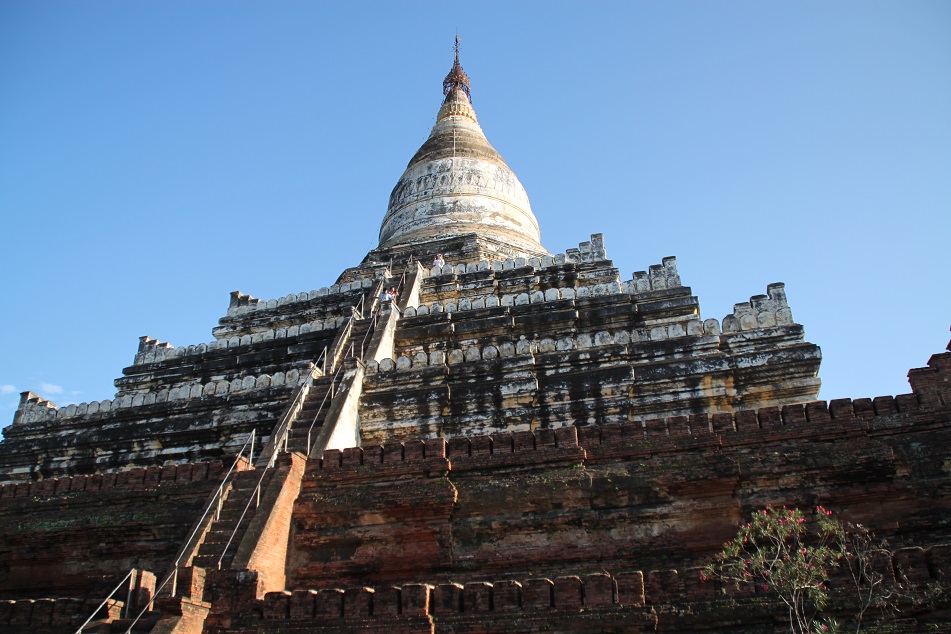
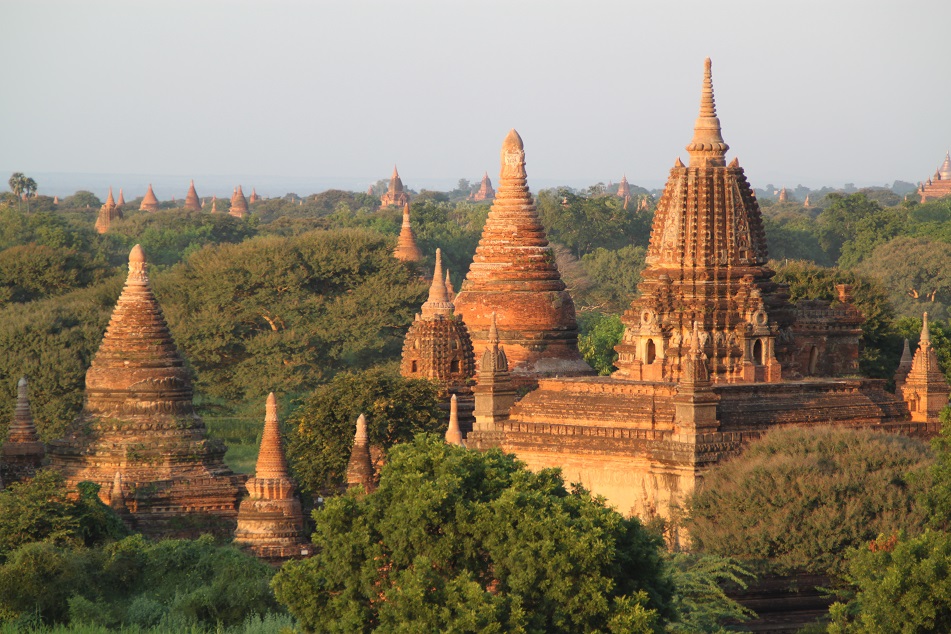
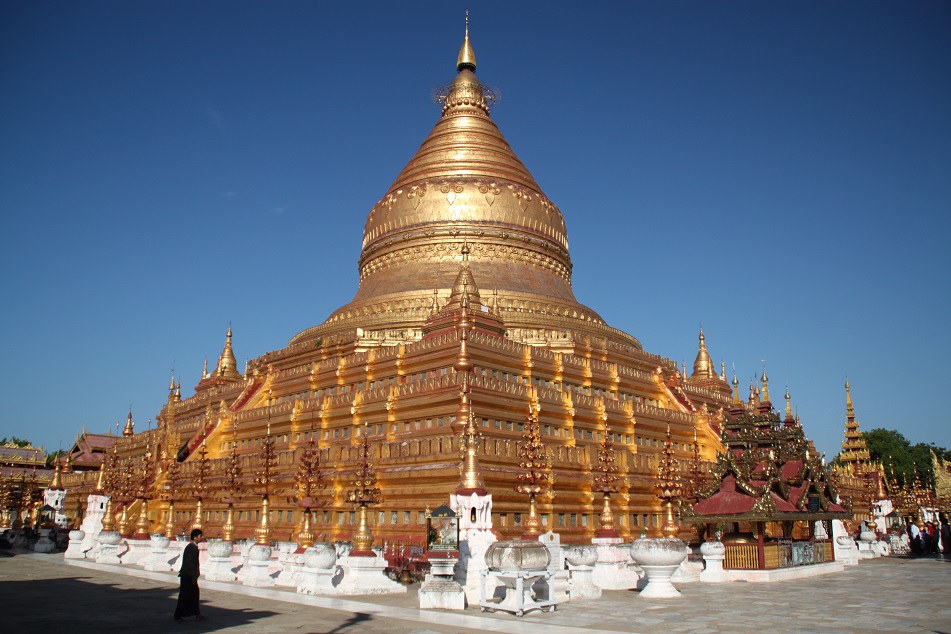
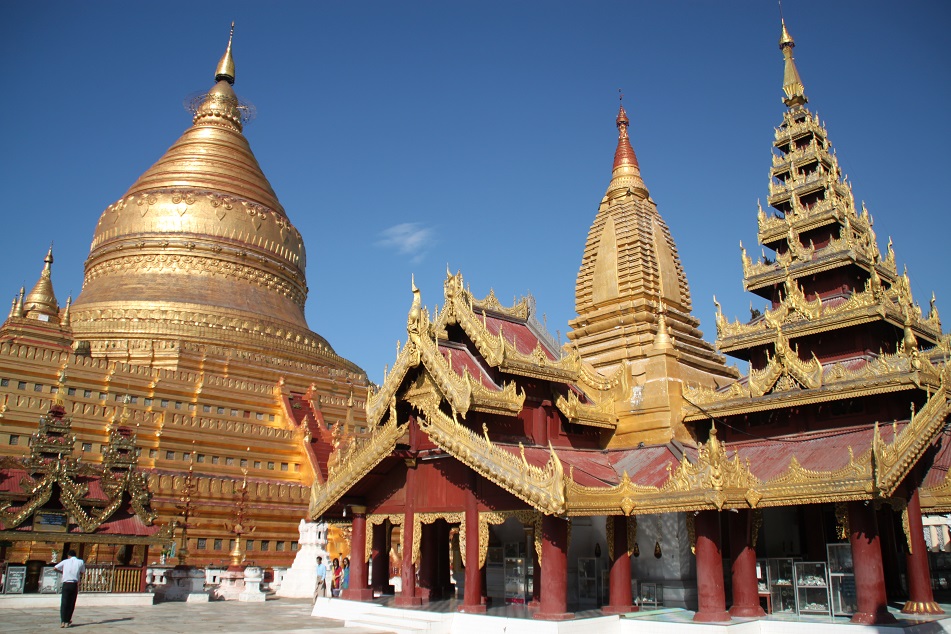
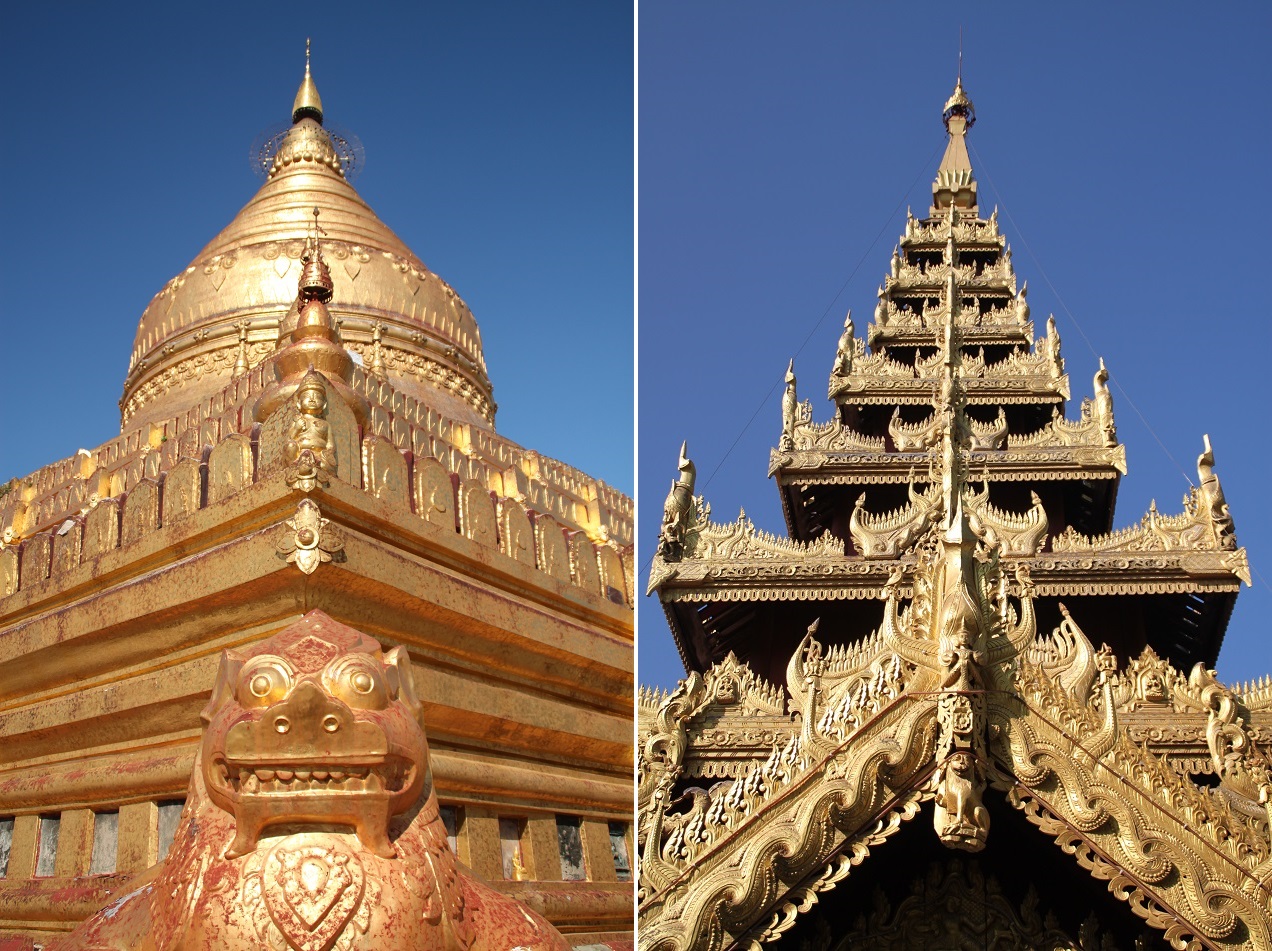
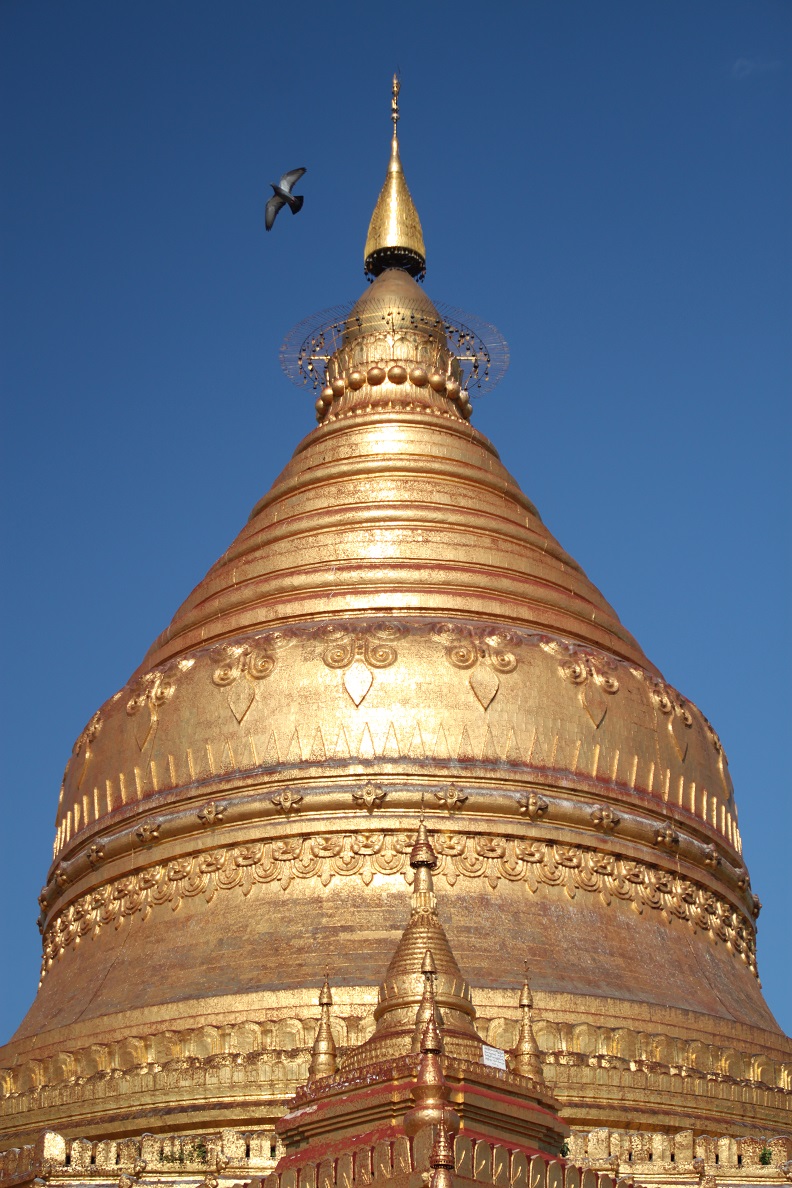
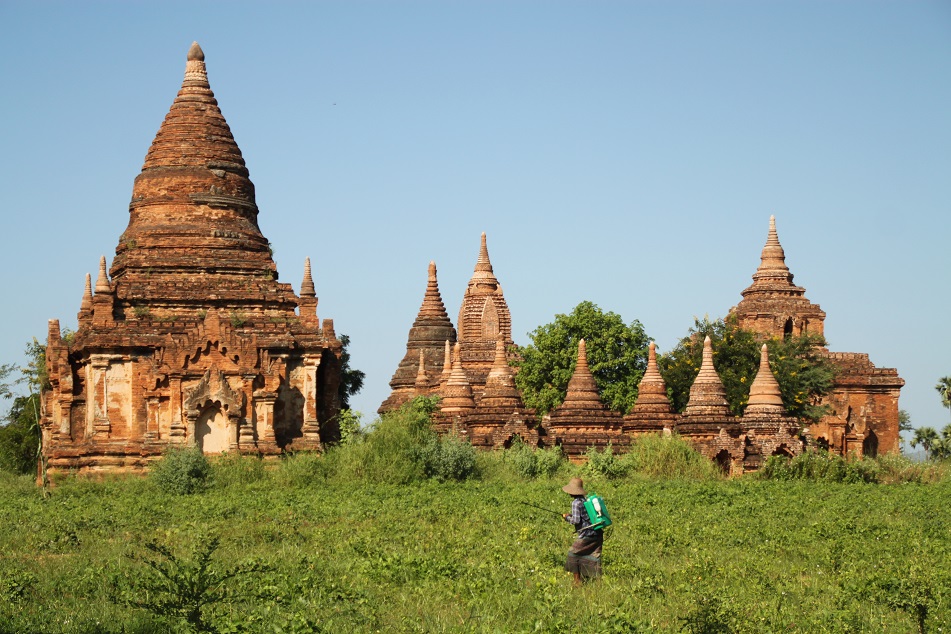
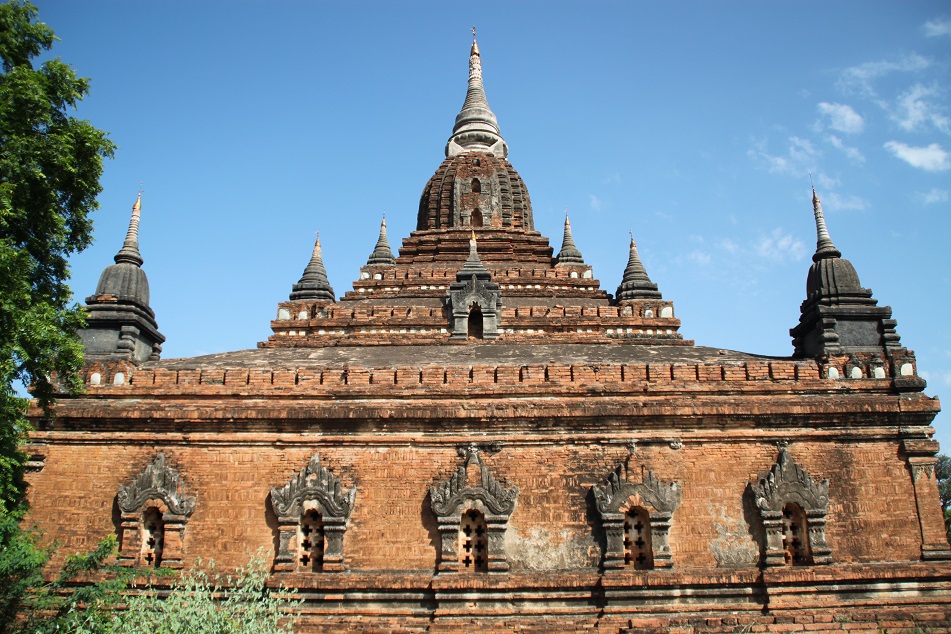
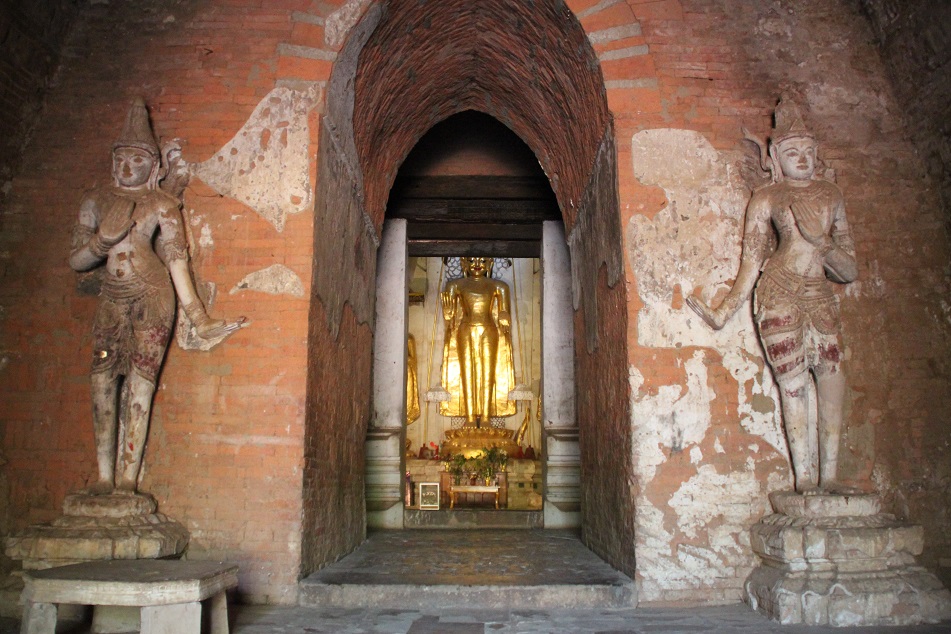

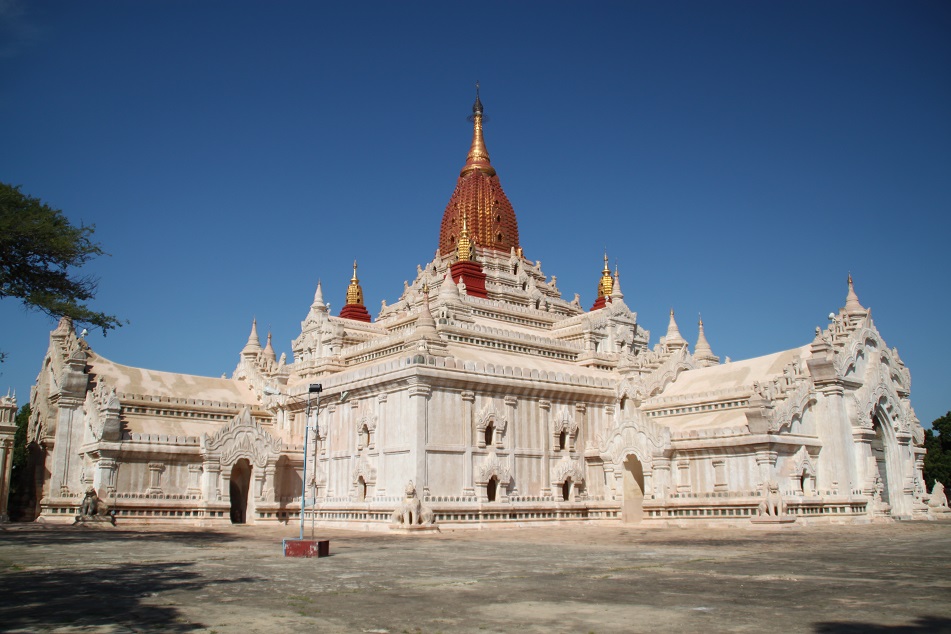
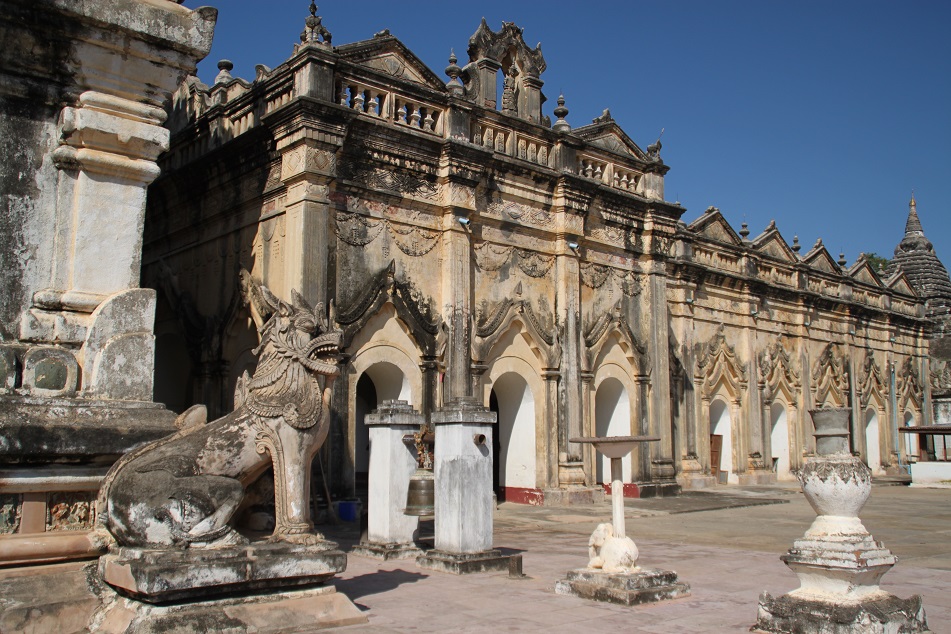
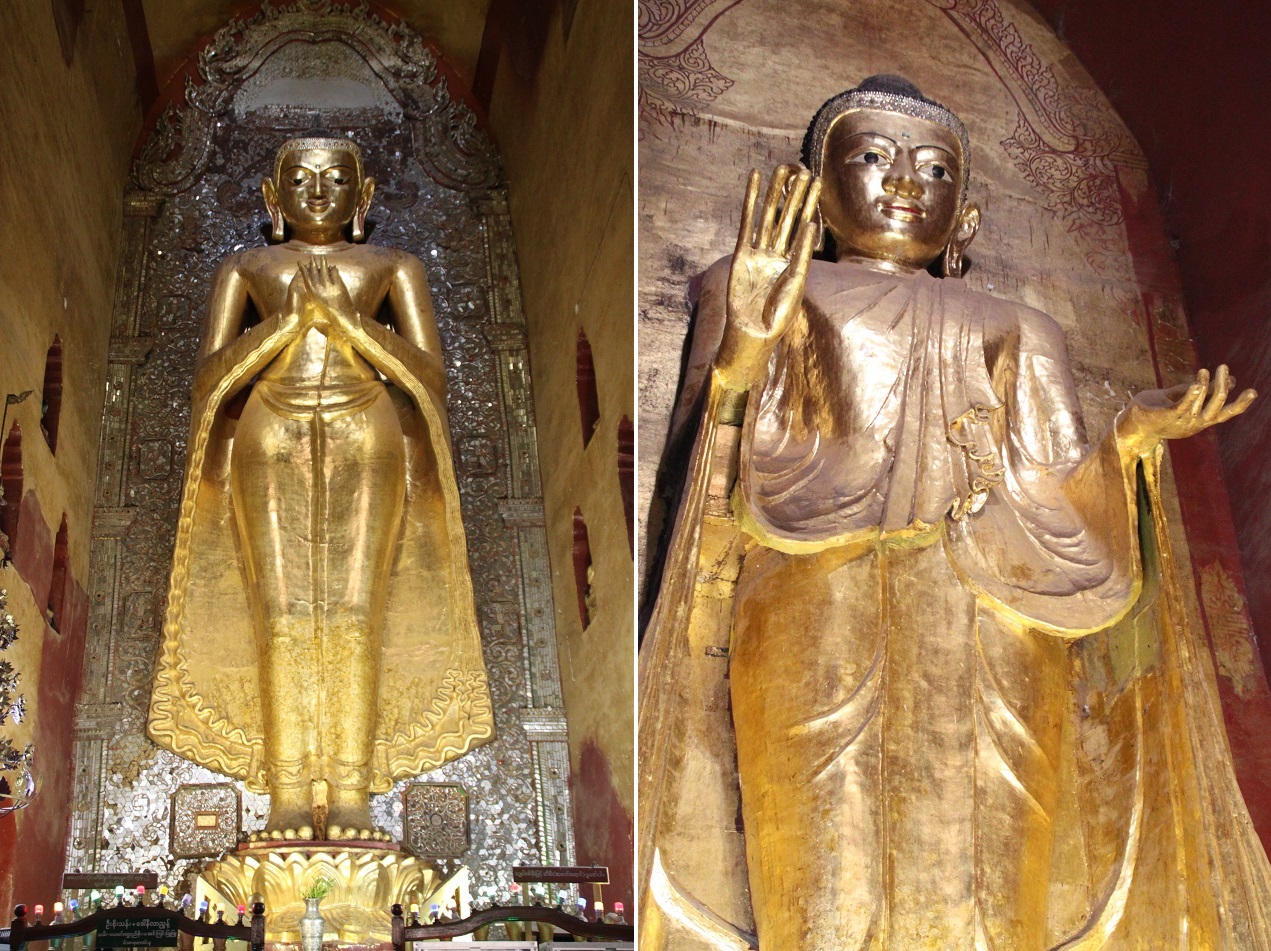
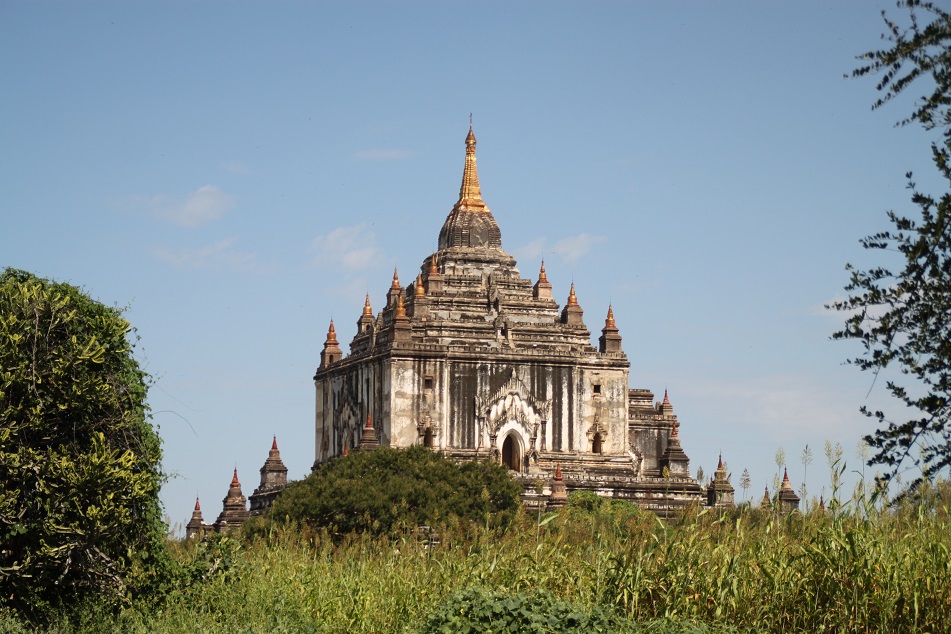
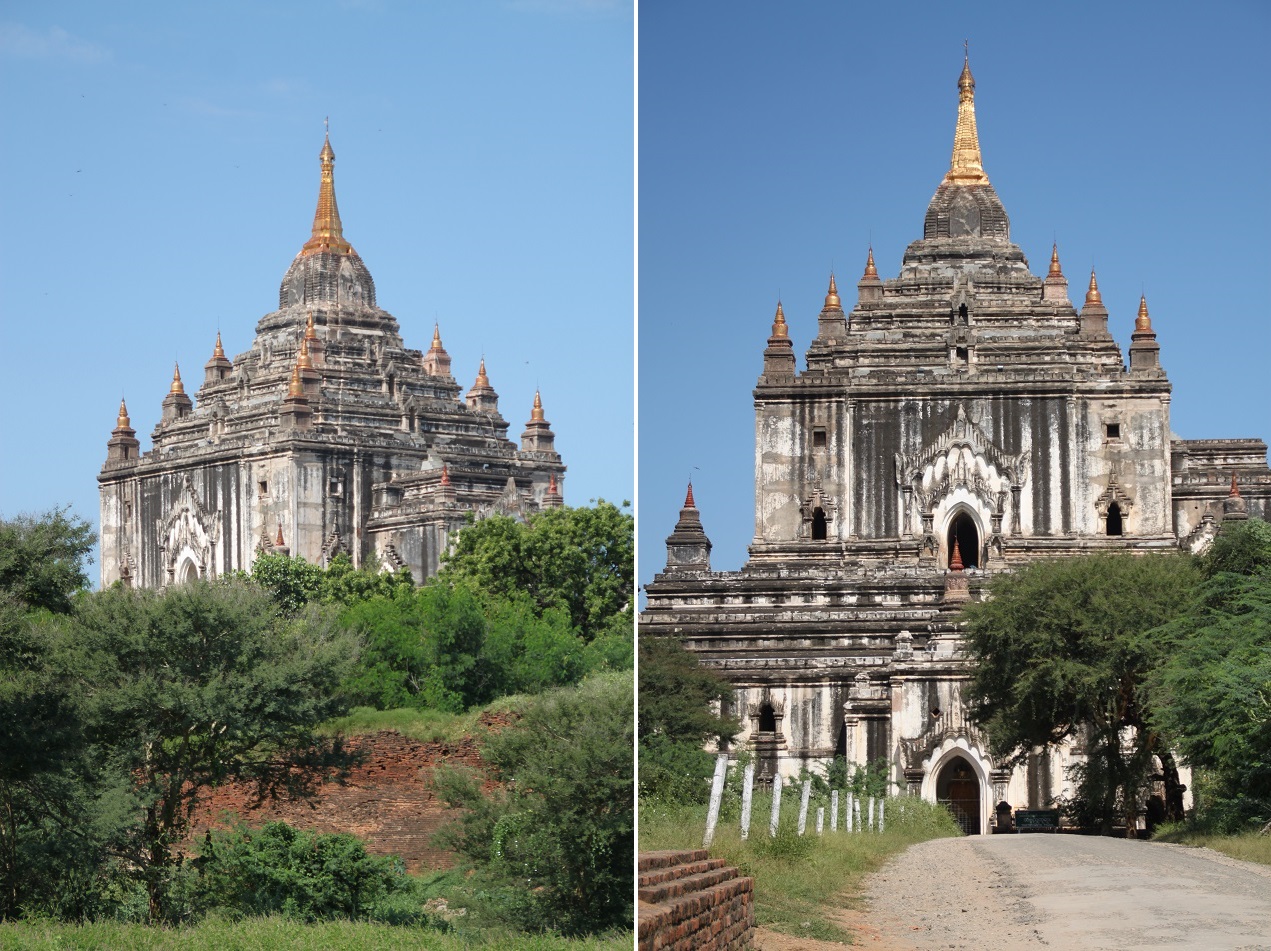
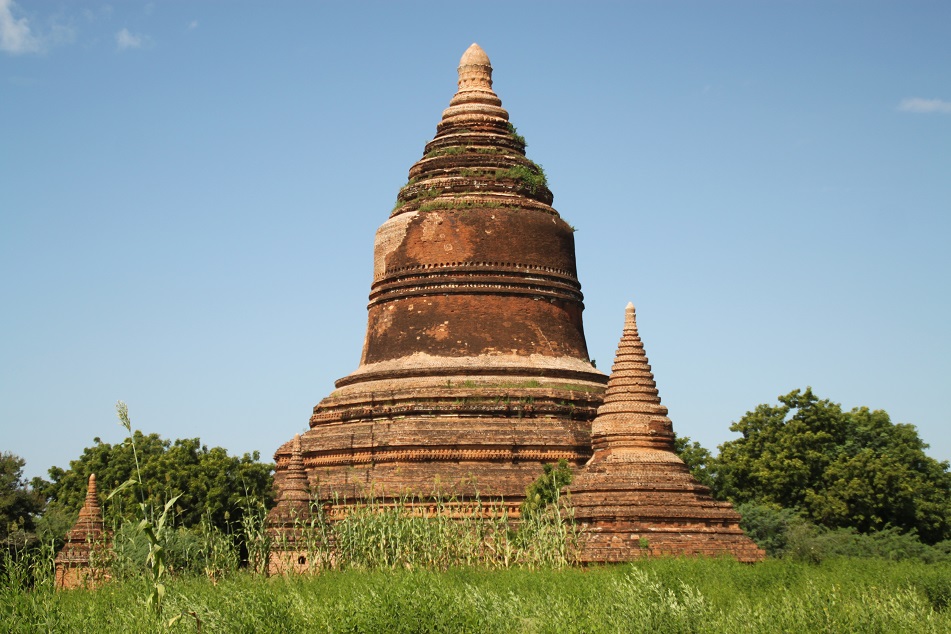

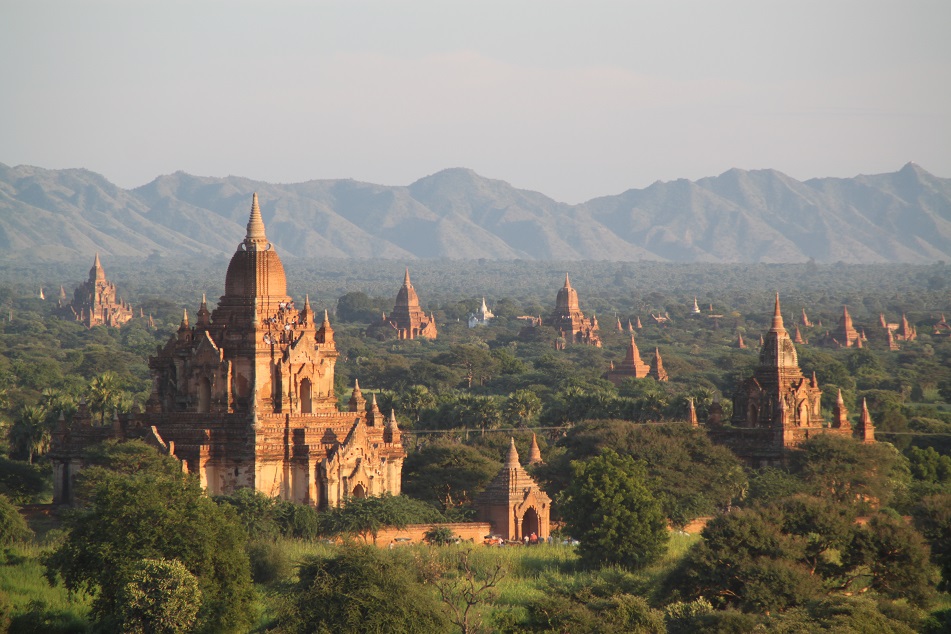
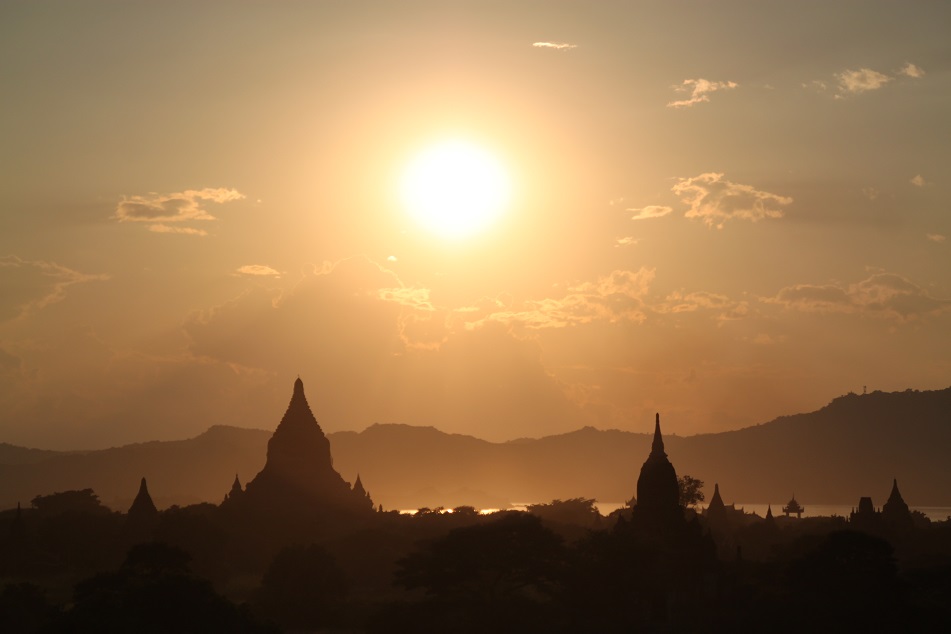
Cerita sejarah yang runut dan bagus, Bama. Sukaaa your story and your amazing photos. Bagan ini masih jadi wish list-ku. Bentuk candi dan kisah kerajaannya sungguh membius. Baca ini dan episode sebelumnya jadi pingin ikutan jelajah dan urutin sejarah persebaran Hindu-Buddha di Nusantara. 🙂
LikeLiked by 1 person
Makasih Halim. Bagan memang tempat yang menakjubkan. Aku udah sering liat foto-foto Bagan, tapi pas ada di sana dan liat candi-candinya dengan mata kepala sendiri tanpa sadar aku bergumam “wow, this is amazing!” 🙂
Ngikutin perkembangan Hindu-Buddha di Asia Selatan dan Asia Tenggara memang seru, jadi belajar banyak mengenai sejarah kita sendiri dan kejadian-kejadian di masa lalu yang secara tidak langsung mempengaruhi kita sekarang.
LikeLike
This is quite a post. Not only are you sharing scenes like no other I’ve seen, you’ve given so much history and background of the area. Thanks for this travelogue! Quite impressive.
LikeLiked by 1 person
You’re very welcome, Rusha, and thank your for taking your time to read this post — I know it’s quite long. Bagan is truly an inspiring place with so much history and art.
LikeLiked by 1 person
wow! tabbed it in my bucket list. beautiful pics!!
LikeLiked by 1 person
Thanks Charly. Myanmar is not that far from the Philippines, so I hope you’ll see the temples in Bagan yourself sooner than later.
LikeLike
Beautiful photos Bama, and amazing history. I don’t now how we spent three days in Bagan and missed Shwezigon!
Alison
LikeLiked by 1 person
Thank you, Alison. Shwezigon is a bit far from the other temples as it is located almost at the far end of the Old Bagan area. We went there early in the morning and were very lucky with the weather.
LikeLiked by 1 person
Wonderful photos! Thank you for sharing a good story..
LikeLiked by 1 person
Gracias Geldryn, and thank you for reading this post.
LikeLiked by 1 person
I love how much I learned through this post!
LikeLiked by 1 person
Glad to know that, Claire. Thanks for reading! 🙂
LikeLike
I really enjoyed reading this 🙂 Beautiful photos to look at too!
LikeLiked by 1 person
Thank you, Lia. Really appreciate your time to read this post.
LikeLiked by 1 person
Wow, the diversity of your pictures is stunning! I love that this time there is a picture of people included! 🙂 My favourite shots are the view from Shwesandaw because it makes my heart itch and want to travel, the farmer working on his field because it shows how close the divine and the ordinary can be and the view of Bagan Plain before sunset – it reminds me of Australia (because sunsets were a part of my day that I watched with wonder). Thank you!
LikeLiked by 1 person
You noticed. 🙂 I know I rarely take photos of people, but whenever I remember, I always try to snap some shots of the locals. The first time I climbed Shwesandaw’s steep steps, I was stunned by what I saw: endless ancient stupas and temples whichever direction I looked at. Sunset is indeed one of the most magical moments of a day, and it has inspired many writers and artists to create beautiful work, I believe. Thank you, Katha.
LikeLike
This is beautiful! I love your photos. Bagan is at the top of my list.
LikeLiked by 1 person
Thanks Megan. Bagan has been increasingly popular since Myanmar opened up to the world a few years ago. I hope the government take serious actions to preserve those beautiful ancient temples and the environs so that in the future people still can get that ‘authenticity’.
LikeLiked by 1 person
I feel the same way! I’m hoping to go before major westernization
LikeLiked by 2 people
Emang cakep Bagan ini
LikeLiked by 1 person
Banget mbak. Untungnya saya nginap 4 hari di Bagan, jadi lumayan puas menjelajah peninggalan sejarah yang jumlahnya ribuan itu.
LikeLike
Incredible!
LikeLiked by 1 person
Bagan really is one of the most magical places on the planet, I believe.
LikeLiked by 1 person
Amazing photos. It looks so beautiful I’ve had to pin it!
http://www.mytravelbugbite.wordpress.com
LikeLiked by 1 person
Much appreciated, Emma. I’m glad you enjoyed this post.
LikeLiked by 1 person
Ok, this is now officially a “must see” place for me!!!! 🙂
LikeLiked by 1 person
It should be on the list of all ancient temple enthusiasts. 🙂
LikeLike
Bama, this fabulous post brings me right back to our days in Bagan. Shwezigon was sublime in the early morning, with all its gold leaf shimmering under a perfect blue sky. I did not know the story behind Nagayon (it explains the name!) or the fact that Shwesandaw is the oldest major pagoda there. The tales of the ambitious builder-kings were a fascinating read.
LikeLiked by 1 person
I was a bit worried after reading someone’s experience who encountered touts at Shwezigon. So I was happy to know that our visit to the pagoda was tout free — that and the nice weather made the long ride from our hotel worth taking. Ha! you noticed the correlation between naga and serpent. 🙂 Speaking of ambitious builder-kings, today I read about the plan to build a tower in Dubai taller than Burj Khalifa. Talk about insatiable human ambition. Makasih for your thoughts, James.
LikeLiked by 1 person
Stunning captures of an awe-inspiring landscape. We had hoped to visit Bagan while in SE Asia a few years ago, but just couldn’t make the trip happen. How much time did you spend there, Bama? (I am keeping open the possibility of a future adventure there.) 🙂
LikeLiked by 1 person
Thanks Tricia. I stayed four nights in New Bagan, just south of Old Bagan where most archaeological remains are situated. I guess when you do visit Bagan, spend at least three nights so you’ll have ample time to explore both the famous and less-known temples.
LikeLiked by 1 person
Very detailed post…with amazing clicks
LikeLiked by 1 person
Thank you, Arun. It took me quite a while to do research on Bagan, so I’m glad you enjoyed this post.
LikeLike
Those temples are dazzling!
LikeLiked by 1 person
Oh Lex, you would love Bagan. Although Myanmar’s unprecedented economic growth following its opening up to the world in 2011 has brought in so many foreign visitors in such a short span of time (including me!). I really hope the country won’t be overrun by irresponsible tourists who don’t really care about the local culture and visit the country just because it’s trendy now.
LikeLiked by 1 person
Agreed. I’m dying to go before it’s totally overrun. I felt this way about Tibet, too, although it is at least harder to reach and get in – glad I have been there twice before the hordes discover it. Again, your photos are just gorgeous! 🙂
LikeLiked by 1 person
Tibet has always been on my wishlist since the first time I saw a photo of Potala Palace probably more than 15 years ago. Its present-day tinderbox atmosphere is both a curse and a blessing, and lucky you to have been there twice! Thanks Lex. I couldn’t have asked for a better weather when I was in Bagan.
LikeLiked by 1 person
It truly does not get any more beautiful than that.
LikeLiked by 1 person
Bagan is one of those places that will leave you awestruck. There’s something exotic, mysterious, and inspiring about those ancient temples scattered amid lush vegetation and sandy roads.
LikeLiked by 1 person
Fascinating history and photos, as always. I especially like the ones of the temples poking their tops through the trees. This reminds me of the view in Tikal, Guatemala, where the Mayan temples rise above the jungle.
The stories and history of religions (all that I know of) reaffirms in my mind that religion is all about men and power.
Thanks for a great post.
LikeLiked by 1 person
Thank you, Marilyn. Actually those also remind me of the photos of Tikal that I saw from people’s blogs. I wonder if both Tikal and Bagan do actually leave the same feeling to everyone visiting both places. Hope I can make it to that part of the world one day. It’s sad that what were supposed to be the words of wisdom, peace and compassion turned to be a tool for men to control and exploit others. At least we can educate ourselves to not be victims of it. Thanks for sharing your thoughts, Marilyn.
LikeLike
Another great history lesson! And I remain in disbelief that Bagan has yet to be designated a Unesco World Heritage Site. Regardless of the poor restoration work, there is vast, valuable, tangible history there that deserves reverence and protection. There is nowhere else like Bagan on the planet. Can’t wait to see what you’re posting next! 🙂
LikeLiked by 1 person
Apart from the poor restoration work, the military government also built a conjectural palace over the old palace ruins despite the lack of documentation of how the original palace looked like. But as the country is opening up to the world, serious efforts to enlist Bagan as a UNESCO World Heritage Sites have been restarted. I think it really deserves to be on the list. I’ll be posting a few more stories on Bagan, Sri Lanka, and Nepal before starting Chapter 2 of the Spice Odyssey series. Thanks Kelly!
LikeLike
What a wonderful piece on Bagan, Bama. I truly like the way you do your homework on the places you visit and then enlighten us with the details of history. And your photos are just outrageous here. I am a bit annoyed because there was no sunrise nor sunset the whole time I was in Bagan, so I couldn’t get one of those low in the sky sun shots.
LikeLiked by 1 person
Thanks Badfish. Blame my interest in history — ancient temple is my weakness! I know my recent blog posts are longer than the ones prior to the Spice Odyssey series, but that’s because I want to reintroduce the past connections between South and Southeast Asia to present-day readers, because there are so many interesting things about the two regions many people seem to be unaware of. As for the absence of sunrise and sunset when you were in Bagan, well, we’ll never know what we’re going to get. I myself was not always lucky with the weather during the six-month trip. Much appreciated for your thoughts.
LikeLiked by 1 person
Cool. And maybe the weather was trying to tell me that I must go back??
LikeLiked by 1 person
I think it was. 😀 Better luck next time!
LikeLiked by 1 person
I’ll have to make sure I go when you went, when the dirt was grass and green
LikeLiked by 2 people
Masih ada seri candi/pagoda Bagan yang lain kah? Ditunggu ya, Kak!
Payah nih, gara-gara baca tulisan ini, saya jadi pingin ke Bagan lagi. 😀 Benar-benar menimbulkan kembali keingintahuan! Btw, pantesan Thatbyinnyu kelihatan dari segala arah ya. Kirain itu cuma perasaan saya aja.
LikeLiked by 1 person
Masih ada dua postingan mengenai Bagan. Ditunggu yaa.. 🙂
Saya di Bagan nginep empat malam, jadi lumayan puas mengeksplorasi candi-candinya. Iya, Thatbyinnyu itu kayaknya dimanapun kita berada selama di Bagan selalu keliatan deh.
Ayo ke Bagan lagi. 🙂
LikeLike
Truly magnificent, Bama! Love the history behind this amazing architectures. There were pains and gains behind them that made their history is phenomenal 🙂 Thank you for putting it together, truly appreciate it!
LikeLiked by 1 person
My pleasure, Indah. Sorting out the photos and doing the research for this post were time-consuming, but at the same time very satisfying indeed. Bagan is one of those places that will leave you awestruck and inspired. Such an extraordinary place it really is. Thanks again for reading! 🙂
LikeLike
You are a veritable encyclopedia Bama! The historical background you provide is always amazing, but I think you have outdone yourself with this post! Your photos are equally impressive, especially of the Swezigon and Ananda. Being in a group prevented us from getting to the pagodas early enough for those people free images. And we skipped the Shwezigon too.
LikeLiked by 1 person
I would say the same about you, Madhu. Aww, that’s so kind of you. It’s hard to summarize the long history of Bagan, with more than a dozen of important temples out of 2,200 surviving ancient monuments in the plain, into three blog posts, but I did try. James and I were so so lucky with the weather, and the fact that we left quite early in the morning during our stay in Bagan really gave us ample time to explore the temples and take a lot of photos — we went to Ananda twice just to get the shots we wanted. Well, the weather in Mandalay was nicer when you went. It was always cloudy and even rainy when we were there. Thanks Madhu!
LikeLike
Bama have you ever thought of publishing a book? Really so well researched. Dave and I qwere just sitting in front of the computer with open mouths at the astounding photos. our top one is View of Bagan Plain before Sunset. Oh my goodness right out of a magical fairytale!
LikeLiked by 1 person
Sue, actually I have, although that would rather be a long-term project. Thanks for the encouragement! As for the photos, I couldn’t have asked for a better weather. If you come to Bagan one day, you should definitely bike around those ancient temples.
LikeLiked by 1 person
That sounds like a dream come true Bama!
LikeLiked by 2 people
your photo are absolutely breath taking. Makes me want to travel. Thank you for sharing!
LikeLiked by 1 person
Hi Laura. Thanks! You should definitely explore the world. There are lots of inspiring landscapes, jaw-dropping ancient heritage, beautiful and kind people, and scrumptious dishes out there.
LikeLiked by 1 person
Pingback: Bagan: An Empire in Decline | What an Amazing World!
Thanks Johnnie. Riding e-bike through patches of sand was a little bit of an adventure, but in general Bagan is easily accessible by most people.
LikeLike
Pingback: The Fall of Constantinople | What an Amazing World!
Pingback: Mandalay and the Last Burmese Kingdom | What an Amazing World!
Great post! Beautiful photos!
LikeLike
Thanks Kamilla! Bagan is an exceptionally beautiful place, so it’s really hard to take bad photos of it.
LikeLike
Pingback: Trowulan: Beauty in Red Brick | What an Amazing World!
Pingback: Candi Ijo: A Silent Witness of Change | What an Amazing World!